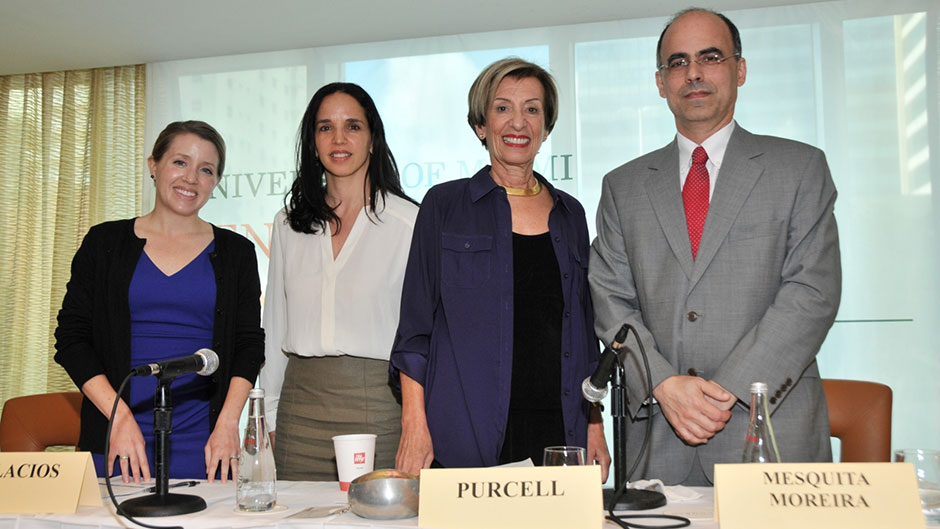The outlook for trade in Latin America remains poor, as intraregional and external trade has declined over the last several years and will likely continue to do so. As such, the region needs to look globally for trade opportunities, beyond the regionally focused Mercosur or the Pacific Alliance, to open new opportunities and boost competitiveness.
That outlook, provided by Mauricio Mesquita Moreira, principal economist of the Integration and Trade Sector at the Inter-American Development Bank, was one of many viewpoints expressed by a panel of experts Thursday at the University of Miami Center for Hemispheric Policy’s Latin America Economic Forecast 2016 conference.
Held at the Conrad Miami, the symposium also addressed topics such as the changing energy landscape in the region, economic policies to boost growth, and the expanding Chinese presence.
Margaret Myers, program director for China and Latin America at Washington, D.C.-based Inter-American Dialogue, noted that despite slowing trade growth between China and Latin America, the East Asian country continues to broaden its engagement with the region, which covets China’s loans and investments. Although the economic relationship is uneven, both sides see it as a win-win: Latin America is able to export its commodities and have access to investment, while China is able to diversify its sources of agricultural and energy imports, according to Myers.
Energy producers in Latin America (Venezuela, Mexico, Brazil, and Colombia) are feeling the effects of the nearly 50-percent decline in oil prices over the past year. The decline, said Luisa Palacios, senior managing director and head of Latin American research at Medley Global Advisors in New York City, will impact all countries in terms of growth, current accounts, and fiscal balances. Falling capital investment by state oil companies due to declining revenue will likely contribute to further declines in oil production.
Experts at Thursday’s conference also provided country-by-country economic forecasts. Manuel Suárez-Mier, an economist in residence at American University’s School of International Service, said Mexico’s economic growth outlook compares favorably with the rest of Latin America. The drop in oil prices has boosted Mexico’s competiveness, and rising labor costs in China have also aided its manufacturing sector, according to Suárez-Mier. While short-term growth will likely remain low, major reforms in the energy and telecommunications sector should further boost growth in the medium-term.
In Brazil, wide-ranging corruption scandals, including one involving the state-owned oil company, Petrobras, has embroiled the administration of recently reelected President Dilma Rousseff. Growth this year will be negative and flat in 2016, predicted Christopher Garman, head of country analysis at the Eurasia Group in Washington, D.C. While the corruption scandal will make governance messy in the short-term, it has the potential to improve corporate governance in Brazil, improving the country’s competitiveness in the long-term, he said.
Joydeep Mukherji, managing director in the Sovereign Ratings Group at Standard and Poor’s, said Colombia and Peru will see lower growth over the next few years due to slowing global growth and falling commodity prices. He noted that both saved gains from the commodities boom and have strong fiscal policy frameworks, and that flexible exchange rates should allow them to adjust to lower growth.

